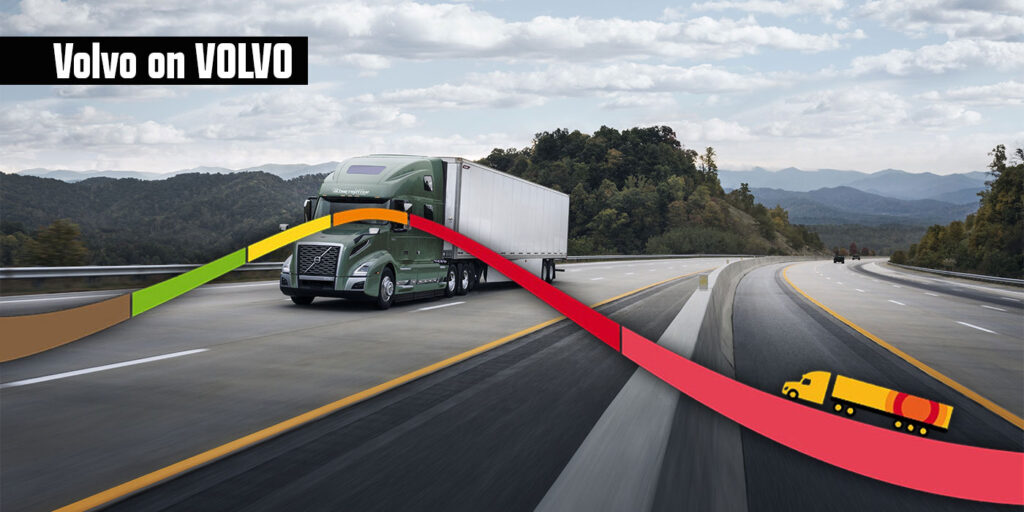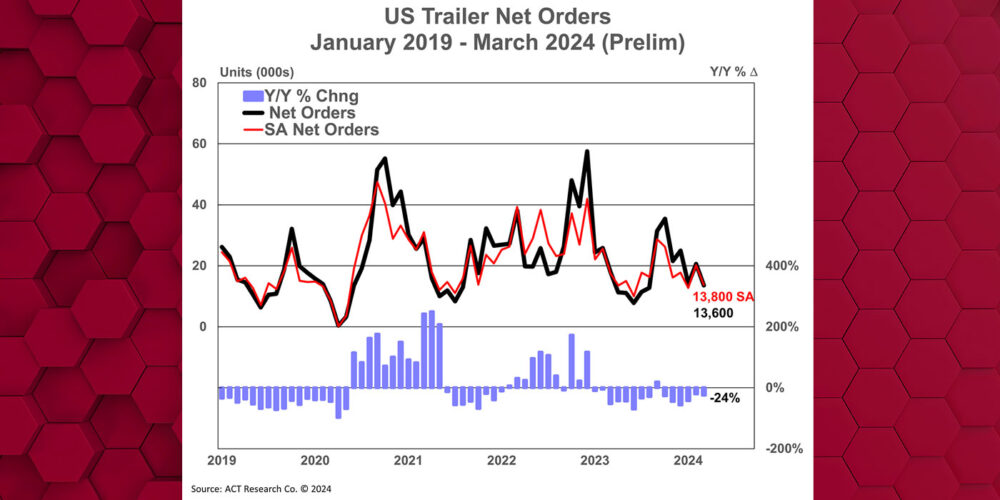The powertrain trade-off has always been: When do you want your fuel efficiency? Or more accurately: At what speeds? With increasing fast axle ratios enabled by downspeeding, there has always been talk of the operational “sweet spot”–that magical RPM, MPH balance that wasn’t burning too much fuel, but wasn’t underpowered. Just right.
The reality is that the road doesn’t always cooperate. Variables like congestion, terrain, application, and even driver behavior works against the optimal operation. Powertrain spec’ing considerations can often be a tug of war between efficiency and power, especially when application variability comes into play. Yet, with average diesel prices above $5, fleet managers across the country can be heard yelling: “It’s my fuel efficiency, and I want it now.”
In talking with Johan Agebrand, director of product marketing, Volvo Trucks North America, he explained that to provide improved fuel efficiency across a range of average truck speed you’d want, “the fuel efficiency of a direct drive and the performance of overdrive.”
That idea was the motivation behind Volvo Trucks North America’s I-Torque powertrain offering that takes its 13-liter D13 turbo-compound (TC) diesel engine, standard on all Volvo sleeper trucks, and pairs it with the 13-speed I-Shift automated manual transmissions (AMT). You might be saying, “A 13-speed transmission with a crawler gear for on-highway application, are you serious?”
While the AMT technology started out in the vocational space, Volvo Trucks engineers saw an opportunity to bring its gearing know-how to over-the-road operation that enables rear axle ratios as low as 2.15 and lower RPMs with more power without sacrificing slow speed maneuverability.
Fun side note: Taking ideas from vocational applications and implementing them in on-highway applications to reap fuel efficiency isn’t unprecedented. Joel Morrow, senior driver and vice president of equipment procurement at Ploger Transportation, pointed toward a similar spec’ing strategy to get to faster rear axle ratios in a 6×2 configuration, leveraging vocational-minded suspensions that could handle the increased torque.
In pairing the 13 TC Volvo engine with the 13-speed I-Shift and incorporating advanced shifting strategies driven by the latest advancements, Volvo Trucks stated that it allows more fuel efficiency operating at a speed range between 55 MPH and 85 MPH (where legal of course.) In fact, at 85 MPH, Volvo Trucks said that it can hit 8.5 MPG fuel economy, and the 55 MPH to 85 MPH sweet spot is an increase of 31% in fuel efficient speed range vs. the 12-speed I-Shift.
Agebrand noted though that this isn’t a one-size-fits-all solution. “For fleets with predictable routes and consistent speeds, the 12-speed I-Shift is the perfect fit and will hit efficiency targets,” he said. “I-Torque is suited for trucks that operate with more variability. The maximum speed limit in California is 55 MPH. So if you’re picking up a load in California, for example, and then you cross state lines and operate at 70 MPH, that’s where you’ll see the I-Torque benefit.”
He also highlighted that Volvo’s TC engine is what makes the I-Torque downsped powertrain possible. A quick refresher on turbo-compounding: It recaptures the heat from the exhaust and recirculates it back into the drivetrain via a secondary turbo, utilizing heat that would basically be wasted otherwise. Essentially, the turbo compounding process lowers the floor on the RPMs needed to achieve maximum torque.
Shifting transmission technology into high gear
Increased intelligence is also pushing powertrains to operate more efficiently. Volvo Trucks also announced its I-See employs map-based road topography to work with I-Shift, managing the truck’s speed and gear shifting in the most fuel efficient way on any route and terrain. Take a hill climb, for example. I-See knows the hill is ahead thanks to the combination of the truck’s GPS position and pre-loaded map data. It tells the I-Shift transmission to proactively downshift to remain in the lower gear for the entire climb instead of changing gears in the middle of the hill.
“It’s like when you’d ride over hills on your bike as a kid. Coming down, you’d pedal all out in the highest gear and then just before the hill, you’d drop it into low gear to make it up,” Agebrand said. “This is the same idea, but we know the most efficient shift point and when to make that shift.”
Not only that, but the map-data also allows the Volvo powertrain to manage the speed all the way through the descent, potentially scrubbing speed with the engine brake at the most efficient moment as the truck crests the hill to keep it in range so it doesn’t exceed the maximum cruise speed by the time it reaches the bottom of the hill.
The catch is that your truck has to be operating in cruise control mode for the system to operate. I-See will not override driver input. So if the driver mashes the gas halfway up the hill, the truck is going to respond to the power demand. Keeping the truck in cruise is crucial, but that’s a fuel efficiency best practice in and of itself.
As with any technology implementation, continuous driver training is key. Volvo Trucks recommended incentivizing cruise control usage with higher cruise speeds. While time in cruise was a basic operational telematics data point, basics never go out of style. It’s important to stay on top of that metric to ensure you’re getting the full ROI of your intelligent powertrain investments.














